At 8:15 a.m. local time on the morning of Aug. 6, 1945 the first atomic bomb — codenamed “Little Boy” — was dropped from the B-29 “Enola Gay” on the Japanese city of Hiroshima. It was the first of only two times that an atomic weapon had been used in wartime, and while even 75 years later the event remains controversial. It was a testament to the technological process that occurred during the Second World War.
When the war broke out on Sept. 1, 1939 with Germany’s invasion of Poland, few could have expected the technological leaps that would occur over the next six years. Military historians have largely focused on the advancement in small arms, and the development of superior tanks and other killing machines, and for good reason.
World War II was the first conflict to see the use of jet aircraft, although it wasn’t until the Korean War that jets actually went head-to-head against one another. WWII saw the introduction of the assault rifle and notably the missile.
Yet, this most horrible of conflicts should also be remembered for how much progress was made during the war and can still be seen in the world today.
The Manhattan Project
Easily, the most significant advance during the Second World War was the ultra-secret project to develop the atomic bomb. It isn’t hyperbole to suggest that it truly involved the brightest minds on the planet.
“The importance of the Manhattan Project as leaps forward in science and technology cannot be overstated,” said Dr. David J. Ulbrich, associate professor of military history at Norwich University.
“The United States needed to win the race against Japan and Germany to create an atomic bomb,” Ulbrich told TechNewsWorld.
“This wartime priority made the research and development process much faster than in peacetime,” he added. “Warfare thus created the ultimate crisis motivation and thus removed limits on money and resources that existed in peacetime.”
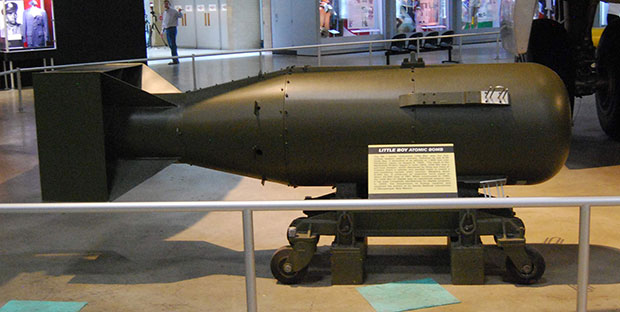
The project involved several hundred thousand people — including those who pushed the brooms and guarded the scientists and other staff. It was also the most costly military undertaking at that point in history.
“This entire project cost an estimated US$2 billion in 1940s dollars — which amounted to nearly one percent of all American expenditures of $300 billion during the Second World War,” explained Ulbrich.
“That is a massive commitment of resources to a single weapon,” he noted. “During the Great Depression in the 1930s, the U.S. military could not even afford to provide small arms for training, nor could the U.S. military find the money for research and development of airplanes and warships.”
More Than an American Effort
It is easy today to think of American theoretical physicist J. Robert Oppenheimer leading the efforts, and he is of course remembered for his quote of the Bhagavad Gita in describing the explosion at the Trinity test site in New Mexico on July 16, “Now I am become Death, the destroyer of worlds.”
The technology used to develop the bomb was notable, as well as the international effort to create it.
“The Manhattan Project was a truly monumental and historic endeavor — the collaboration between governments, industry, and the science community, with the pointed goal of developing nuclear weapons during World War II, was unprecedented at the time, and actually spurred R&D in energy, technology, and other advanced sectors,” suggested Gilbert Michaud, assistant professor in the online Master of Public Administration Program at the Voinovich School of Leadership and Public Affairs at Ohio University.
“For instance, lessons learned in nuclear fission in the 1940s helped, in part, lead to nuclear energy as a viable electricity generation asset in the 1950s and to this day,” Michaud told TechNewsWorld.
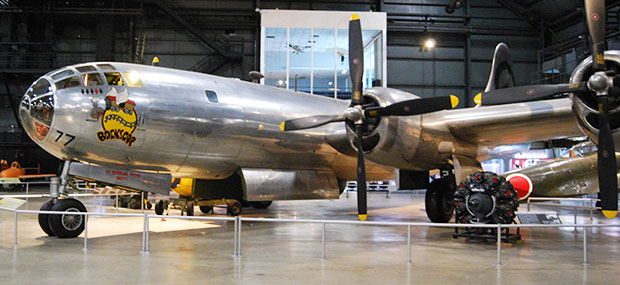
The challenges of making an atomic bomb also involved many scientific questions from how neutrons could be made to split nuclei of atoms into smaller fragments and cause chain reactions.
“The challenges are involved technological questions about how to harness, control, and detonate the incredible power released by splitting the nuclei and causing the chain reactions,” said Ulrich.
The Birth of the Computer and More
Had it not been for the Manhattan Project it is doubtful today’s Internet would exist — and not only because the Internet’s origins were to ensure that a decentralized computer network could survive an atomic attack. But the project was also the catalyst for the development of computers.
“The process of testing, observing, analyzing, replicating, and recording the science and technology behind the atomic bomb required new methods and devices to be created,” Ulrich added. “For example, researchers needed to make faster and more accurate mathematical calculations than could be done by humans, and the computers provided the answer. Computers could make calculations around the clock with no worries about mistakes caused by fatigue or human errors.”
Those early computers used during World War II were massive analog devices, but their success in the Manhattan Project and numerous other wartime activities ensured these machines could evolve in the post-war era.
“Analog computers gave way to digital computers being developed later in the 1940s,” explained Ulrich.
“The science and technology developments used to split atoms for military purposes also laid the foundation for harnessing that same power for peaceful purposes in the post-World War II era,” he added.
Other lessons from the Manhattan Project experiments further yielded non-military applications in medicine and science, such as cancer treatments using radiation, clearer understanding of photosynthesis, and increased understanding of radiation’s effects on the environment.
“This is what we policy scholars call a ‘focusing event’ — basically referring to how a crisis, such as war, and the efforts of Manhattan Project in particular, worked to enhance attention, spark new developments, and accelerate new priorities,” said Michaud. “The Manhattan Project snowballed into the Atomic Energy Act of 1946, broader advancements in technology and electricity generation, and even the establishment of research sites that still operate today, such as the U.S. Department of Energy’s Oak Ridge National Laboratory in Tennessee.”
On the Road
Of course, the Manhattan Project was one — albeit a major — part of the effort to ensure victory over the evils of Nazi Germany and Imperial Japan. The “Arsenal of Democracy” was as much about the trucks as the tanks or guns. In fact, it must be noted that Germany’s invasion of the Soviet Union in 1941 was conducted with more horses than the French Emperor Napoleon had used in 1812.
The United States didn’t rely on horses but instead on horsepower from GM, Ford, Chrysler and others. Those efforts cannot be overstated!
“Many scholars have pointed to the 2-1/2-ton GMC as one of the primary contributors of the Allied success in World War II,” said John Adams-Graf, editor of Military Vehicles magazine.
“Whereas the Germans may have perfected the ‘Blitzkrieg’ style of armored warfare, the Allies perfected moving armies over great distances,” Adams-Graf told TechNewsWorld.
In addition, as the Germans discovered — most notably in the 1944 Battle of the Bulge offensive — tanks aren’t enough if you can’t keep them fueled. This is where the Allied trucks proved so crucial in keeping the troops supplied.
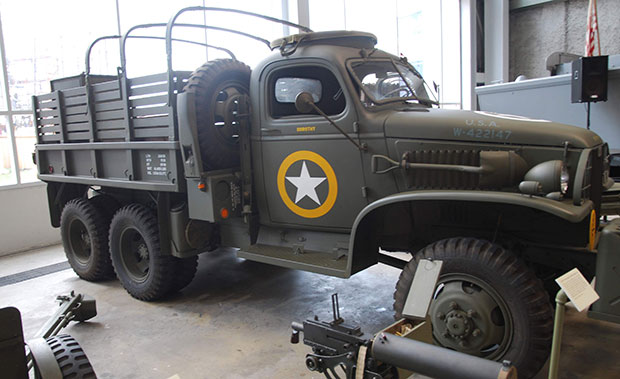
“An army that is based on armored vehicles requires a lot of fuel and support,” said Adams-Graf. “The farther out from their base of supply, the more vulnerable they became. Trucks made the longer lines of logistical support possible.”
The Germans may not have had the trucks, but they did have the Autobahn, which American military planners saw — and it was also used as a blueprint for the national highway plan developed in the 1950s. Anyone taking a long road trip should remember that also is a result of innovations developed and studied during the war.
Flying High
Aircraft technology saw tremendous leaps and bounds during the Second World War, most notably in the development of jet aircraft.
“Aircraft and weapons development advanced exponentially during World War II — major advancements included jet engines, guided bombs, air-to-air and surface-to-air missiles, cruise missiles, radar, and operational helicopters,” explained Jeff Duford, curator at the National Museum of the United States Air Force.
It wasn’t just the ability to fly faster or to be better armed. Some of the technology truly created the era of the jetsetters and is what allowed tourists to explore the world like never before. But it meant overcoming a serious issue first.
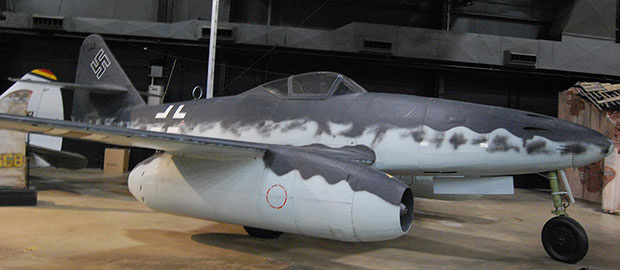
“As aircraft flew higher and higher, the limits of the human body at high altitude became an increasing problem,” Duford told TechNewsWorld.
“In the 1930s, U.S. Army Air Corps personnel at Wright Field, Ohio developed solutions for this problem, one of which was cabin pressurization,” he added. “By the end of World War II, cutting-edge aircraft like the B-29 Superfortress were pressurized, which greatly increased crew comfort, efficiency, and endurance.”
First Step to the Moon
It would be another 25 years before Neil Armstrong would take the first small step for a man on the moon, but the giant leap to the moon arguably began in 1944 when Nazi Germany developed its V-1 rockets, which were used in a terror campaign against London.
Neither the V-1 nor its follow-up V-2 were the miracle weapons that turned the tide of war for the Germans, but the technology was used by both the Soviets and Americans in the early days of the space race.
“On a practical level, German V-2 rockets in World War II foreshadowed the intercontinental ballistic missiles of the Cold War Era,” noted Ulrich.
“They also opened up possibilities of sending man-made vehicles outside the earth’s atmosphere and maybe even to the moon,” he added.
“It’s fair to say that the German V-2 rocket of WWII was a technological ancestor of the giant Saturn rockets of NASA’s moon program,” suggested Dr. Douglas Lantry, historian at the National Museum of the United States Air Force.
“[The rockets] shared the basic functional aspect of liquid propellants in large quantities mixed and ignited to create terrific thrust,” Lantry told TechNewsWorld.
“Their most important difference was that the V-2 was a ballistic missile and a terror weapon, while the much more powerful multi-stage Saturn was a space launch vehicle used for peaceful exploration,” added Lantry.
On a scientific methodology level, the German V-1 and V-2 rockets also paved the way for problem-solving processes.
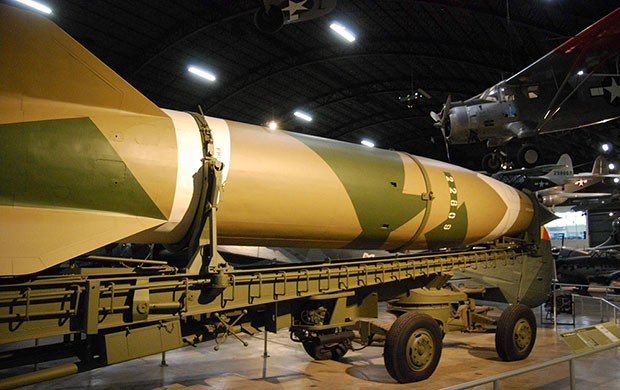
“Germany’s engineers like Wernher von Braun took the knowledge and lessons during World War II and then applied those to bigger, more ambitious projects after the war ended,” said Ulrich.
“Yes, the engineers and scientists developed new gadgets, but more importantly than that, they adapted habits of mind that enabled them about to think bigger, faster, and farther innovations than the V-2 rocket’s 200-mile range, the 55-mile flight ceiling, and 3,850 miles per hour speed,” Ulrich explained.
That was really not that far of a leap to the bigger, faster rockets used during the Cold War.
“Saturn benefited from the engineering, organizational, and promotional talent of von Braun, who also developed the V-2. Postwar research and development using vast American resources allowed von Braun to become the chief creator of rockets that sent astronauts to the moon,” said Lantry.
From Swords to Plowshares
The true lasting impact of the technological advances of the Second World War are seen in the ability to take commercial jets around the world, the ever-bigger cruise ships (at least if that industry is able to survive the Covid-19 pandemic) and of course in the massive skyscrapers seen in cities all over the globe.
With peace came a new world of opportunity that lead to the Internet and much more.
“The incredible scientific and technological achievements during World War II opened people’s eyes about what could be developed or invented, given enough resources and commitment,” said Ulrich.
Simply put, no problem seemed too hard or too big to solve.
“Scientists and engineers became what amounted to the high priests in a materialistic religion that worshipped gadgets and concepts,” added Ulrich. “Other activities, such as improving manufacturing processes or building suburbs, interstate highway systems, and inexpensive houses, were also much easier to conceive.
“During World War II, America figured ways to build 1,200 major warships, 300,000 aircraft, 675,000 ‘deuce and a half’ trucks, and 25 billion rounds of .30-caliber ammunition. Meanwhile, they researched and developed the atomic bomb. So, the post-war years saw Americans quickly put their wartime techniques to work in massive peacetime projects.”























































